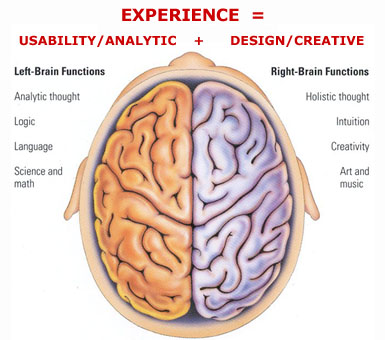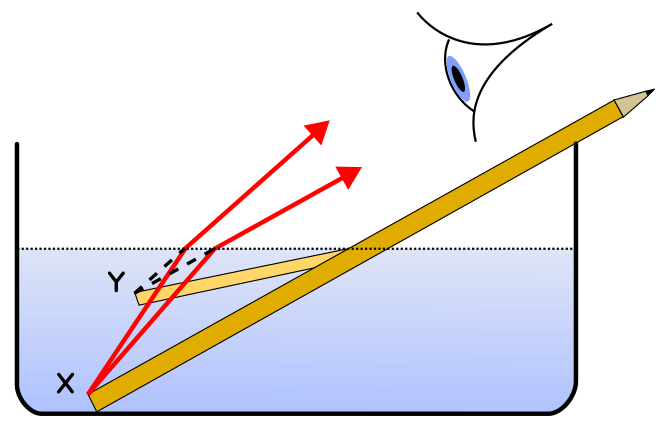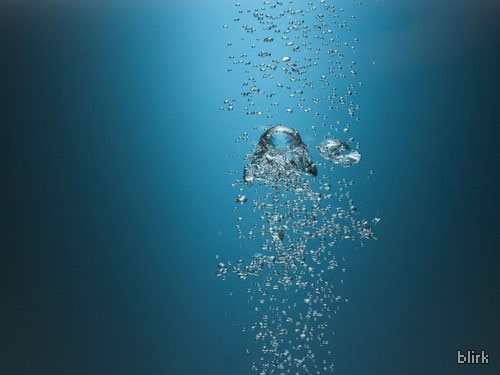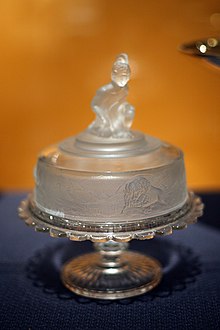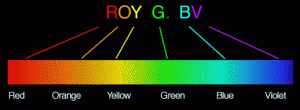Hiya, guys. This may very well be my last blog. Wow...after three years...Well, I'll try and get some blogs on here when I'm in high school; but after those seniors telling me that I'd be up till three A.M. just getting my homework done, however, I don't think I'll be able to, but again, I'll definitely try...if I remember. Which brings us to the topic. I originally wanted to do just memory, because my memory stinks, but then I had to add certain vocabulary, which didn't really fit into my topic. So now we're learning about things of the imagination, but I want to do memory, too. I'll add a link, okay? Let's go with IMAGINATION!
Imagination is incredibly interesting. If you've seen Spongebob, then you know that he has a huge imagination. Especially in that episode. Imagination is actually really cool. It's the process of thinking up ideas or images. But you knew that. I hope. Anyway, the name "imagination" really does make sense, considering it comes from the Latin word for "mental image". Imagination is sort of the opposite of perception. Perception is when your brain takes data from your five senses (which I really hope you know) to form a picture of the world you live in. Perception is basically how you interpret reality. The five sense are:
Sight
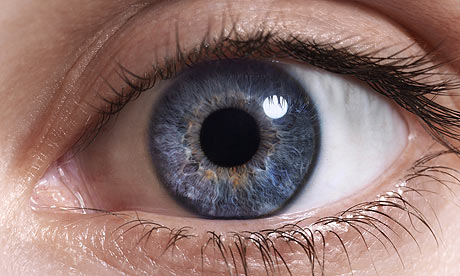
.jpg) |
| HE'S ADORABLE! HIS BIG EARS AND EYES! |
Taste
Touch

Smell

So those are the five senses. Now, how is it the opposite of imagination? Well, let's say you have an apple in your hands. It's obviously a real apple. So your brain identifies the way it feels, smooth, the way it tastes, tangy and sweet, and the way it smells, in Anabel's words, "Sweet, but yet tart, and also crispy." Hang on, Anabel, how does something smell crispy? It sounds like you fried the apple! Forget she typed that on my blog. Back to the apple. So, after the apple is long gone, probably on its way to the ocean, you might remember how it tasted or how it felt, even how it smelled. That's passive imagination, because it's a memory, and memories events, things, feelings, and sensations.
But if, say, you came up with a completely new kind of apple, one that you'd never seen before, let alone eaten, then that's active imagination, and a lot of people use active imagination when they daydream. Imagination helps us fill in the gaps about things we don't really understand. Like way back then, when there wasn't any science, the Greeks, Romans, Egyptians, Norse, Indians, Chinese, and basically nearly every other civilization created myths to help explain things they didn't understand. They needed their imagination for that, right? Right. Imagination, for many people, help the world make sense. It is a really important part of the artistic process. Painters, for example. Some painters create paintings that are lifelike, but that doesn't mean it's not imagination. The artists use their imagination to create art from reality, like Caravaggio.
 |
| Caraviggio Painting |
Other painters, like Salvador Dalí, paint things that you're most probably never going to see in your lifetime. In Salvador Dalí's painting "The Persistence of Memory", the painters imagination transformed everyday objects, such as trees or clocks, into something odd and special. But art isn't the only area that people use their imaginations, of course. Any idea, whether it's a new idea to frost some cookies or a new idea for a book, or even a new type of car, can be considered imagination, though if you think about it, all of that is technically art. Inventors use imagination to come up with ideas for useful or non-useful objects. Even scientists use imagination, thinking up hypotheses to explain something. Again, imagination helps us understand. It helps us filled in the gaps, I suppose you could say, for things we simply don't understand.
 |
| The Persistence of Memory, by Salvador Dalí |
Imagination is used a lot when we're learning. Say you're four or five, and you're listening to a story. You learn certain words and sounds and other things that you might not notice with imagination. How? Well, your brain sort of activates a small part of your brain to fill in those holes. It takes the words, sounds, phrases, and other things, and turns it it into something you can understand. Imagination is also used in phsycology, to help "fix" the brain when it needs to be fixed. Imagination is called "the mind's eye", and it's really escaping from reality for just a little while and simply look at things differently, and your imagination actually send messages to your brain, which then sends messages to your senses, which all combine with whatever you're imagining to make it seem more lifelike. Pretty cool, huh?

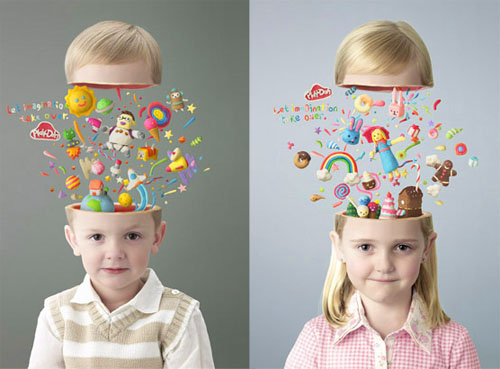 Despite the fact that all of us have imagination, why is it that some people have more of an imagination than others? Well, first off, kids have more gaps than adults, so most likely they'll have a more wild and vivid imagination, because those holes need to be filled, and what better way to fill them than with the nourishment of imagination? But that doesn't mean kids have a better imagination than adults. In fact, if you've seen the book series that some adults have made, then you would've thought that grown-ups have a better imagination. But I think that adults simply have a more controlled imagination than kids. But we're getting off topic. We were supposed to be answering why some people have a better imagination then other people, not kids and grown-ups. (I can almost hear Anabel saying, "Oh wow, such a big difference!") The reason some people have a better imagination than others is because some people use their right side of the brain more than the left. The right side of the brain deals more with imagination and creativity, while the left side focuses more on logic and other things like that.
Despite the fact that all of us have imagination, why is it that some people have more of an imagination than others? Well, first off, kids have more gaps than adults, so most likely they'll have a more wild and vivid imagination, because those holes need to be filled, and what better way to fill them than with the nourishment of imagination? But that doesn't mean kids have a better imagination than adults. In fact, if you've seen the book series that some adults have made, then you would've thought that grown-ups have a better imagination. But I think that adults simply have a more controlled imagination than kids. But we're getting off topic. We were supposed to be answering why some people have a better imagination then other people, not kids and grown-ups. (I can almost hear Anabel saying, "Oh wow, such a big difference!") The reason some people have a better imagination than others is because some people use their right side of the brain more than the left. The right side of the brain deals more with imagination and creativity, while the left side focuses more on logic and other things like that. All this is really cool, but it doesn't explain why we have imagination. Nobody really knows why we have imagination, though some physiologists and philosophers think that it helps people experience empathy for other people. What is empathy? Empathy is when you put yourself in someone else's shoes, imagination what they might be thinking or feeling. Also, since imagination lets us picture reality in our minds, it actually works quite well on problem solving. Scientists that specialize in evolution think that our ability to be able to solve problems in creative ways was vital to the continued existence of our species. Darn our creative thinking!
AIIIEEEE! It really really really really really hurt when, during capture the flag, I tripped over...air...and landed on the green needles they try and pass off as grass. Well, technically, the grass was wet, so that may have contributed to my downfall (literally), but still. It really hurt. Is it true that pain is all in your brain? (Hey, that rhymes! Sorta!) Well, when someone is experiencing pain, often, expecting some kind of medication to result in no pain works as a medicine in itself and is usually enough to actually lessen or get rid of the pain all together. So is pain really all in your head? Yes...and no. Yes, pain is literally "all in your head" because your brain has to explain the pain for you to live it. But pain can't be defined as "imaginary" because once your brain interprets something as painful, once you experience it, it simply can't be classified as all in your head. There actually was a test on a type of medicine that used three groups. Group One was given the medication without being told there was medication. Group Two was given the medication while being assured that it would erase their pain completely. And Group Three was given the medication while being told that it wouldn't help them at all, but rather increase the pain,though why anyone would take medicine knowing that it would increase pain is beyond me. The result was that the Group One and Group Three didn't feel any pain relief, while Group Two felt double the pain relief.
 |
| I didn't want to put a picture of a scratch, so voilá! A crying baby! |
And that concludes
 |
| IMAGINATION! |

Like anyone else, a man named Karim Nader remembers when two plants smashed into the Twin Towers of the World Trade Center, transforming two lively buildings into a pile of heaping, smoking rubble. When the attack happened, Nader had turned on the radio, hearing the voices of the radio caster turn playful banter into horrified panic as they related what was happening in Manhattan. Nader had raced up to the roof of his apartment building, where he had full view of the Twin Towers, not two miles away. Later, he recalls passing through a subway station, where people had left notes and and photographs, searching desperately for their family. Like tens of thousands of people, Karim Nader has vivid memories of September 11th, 2001, both on the aftermath and the actual event. But unlike other people, he knows not to rely on his memory too much. He knows better than to fully trust his memory.


Most people have "flashback" memories of when something monuments happens: the assassination of John F. Kennedy or the crashing and burning of the Hindenburg or the explosion of the space shuttle Challenger. Most of the time, sadly, the recollections aren't very pleasant. But even though those memories may feel so clear and vivid, many physiologists find them utterly and shockingly inaccurate. Nader says that his memory of the attack on the World Trade Center has played a lot of mind tricks on him. He says that he remembers seeing footage on the television on the fateful day of the very first plane hitting the North Tower. But that footage didn't air for the first time until the next day. And Nader wasn't alone: out of five hundred and sixty nine college student of 2003, seventy three percent thought the very same thing. Nader thinks he has an explanation, too. Nader believes that the act of remembering changes our memory. Interested in more? Click here.
And that concludes imagination. I hope you liked it and I really hope you enjoyed. As always, my classmates' blogs are below. They're not all talking about the same things I am, so it should be interesting. Oh, and there's a link to Celine's blog, 'cause she did this topic a long time ago, and I got some information from her blog! Yay! There's also more links on imagination and memory if you want them, and some pictures about "What We See Vs. What Kids See." ENJOY!Anabel's Blog
Katie's Blog
Logan's Blog
Celine's Blog on Imagination
Is Pain All In You Imagination?
How Creativity Works: It's All In Your Imagination
Best Website I Found: The Power of Imagination
How Is Your Memory Holding Up Quiz
A Unique Story About a Woman Who Simply CAN'T FORGET














